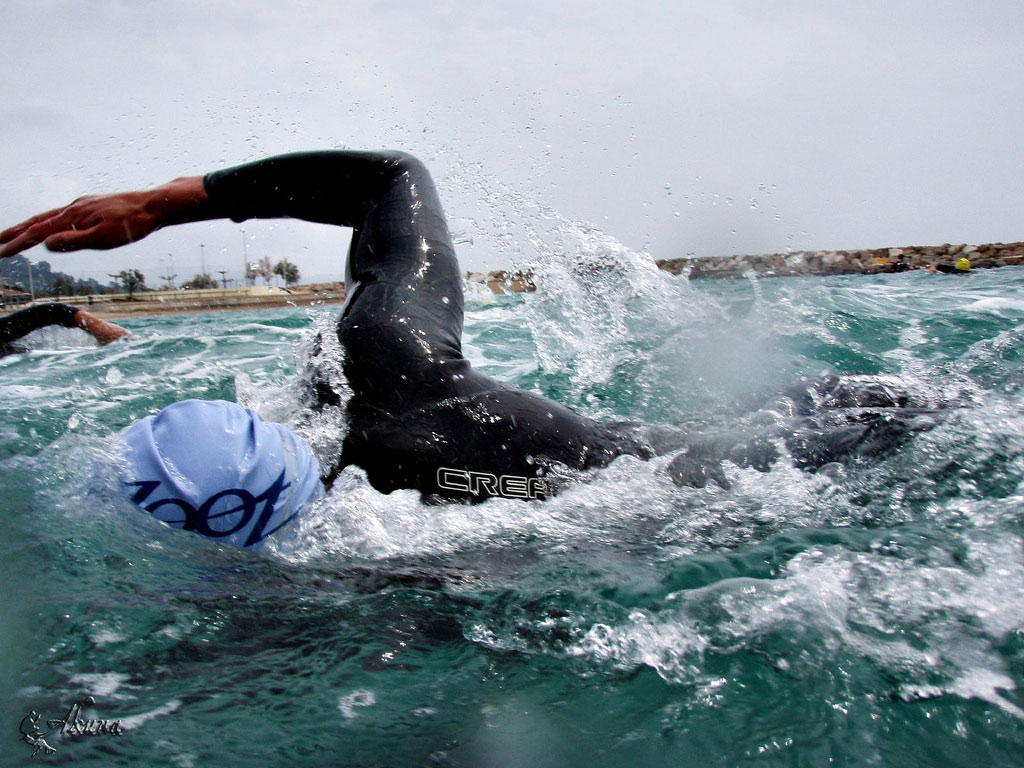
Wetsuit conditions can be a bit confusing for the budding triathlete. Different race organizations have different sets of rules regarding when you can wear them and when you can’t. On top of that, there is a middle ground where they are considered illegal to wear, but you can still wear them. Let’s try to clear some of the confusion up.
Benefits of a Wetsuit
Wetsuits have two big benefits. One is pretty obvious, if you are swimming in colder waters, a wetsuit will keep you warm. What a lot of people don’t realize is how big of an advantage the second benefit of wearing a wetsuit is, and that is buoyancy. Buoyancy basically means it makes you float. Staying higher in the water reduces drag when you swim which makes you go faster. This advantage is why there are rules around when you can wear wetsuits.
Wetsuit Types
Wetsuits generally come in two varieties, sleeveless and full-body. Full-body suits will be more buoyant and provide extra warmth since they cover your arms. However, your stroke may feel restricted if the shoulder area of your suit is not flexible. Sleeveless suits will allow for a more natural swim stroke since your arms and shoulders are exposed. Obviously, with your arms and shoulders exposed you lose the warmth and extra buoyancy provided by sleeves. Sleeveless suits will also be cheaper since they require less material to manufacture.
Wetsuit Rules
As I mentioned above, different race organizations have slightly different rules regarding wetsuits. The rules center around suit thickness and water temperature. Suits that are considered too thick will be prohibited and result in disqualification if worn. When it comes to water temperature things get a little more complicated. I’ll over-generalize the three water temperature conditions to try and explain the various wetsuit policies. Let’s call the conditions hot, cold, and in-between.
Hot
When water temperatures are hot, wetsuits will be prohibited. When wetsuits are prohibited, you will be disqualified for wearing one. Temperatures are generally considered hot when they go above 84 degrees Fahrenheit.
Cold
When water temperatures are cold, wetsuits will be legal. As long as your wetsuit is approved, you are free to wear it. Race organizations define cold conditions differently, but it’s typically when water temperatures fall below 76-78 degrees Fahrenheit.
In-between
When water temperatures fall in-between hot and cold, wetsuits are considered illegal. Illegal doesn’t mean you can’t wear a suit, but if you do, you will not be eligible for awards, prizes, race points, or qualifying slots for other races.
If you are a beginner, not worried about the penalties, and have access to a wetsuit, I would suggest wearing one. They can greatly improve your swim making it safer as well as you faster.
If wetsuits are a possibility for your race be sure to check the rules as to what the wetsuit policy is. Races will generally communicate water temperatures days leading up to the race and/or during pre-race meetings.
For more information on the rules, check out the links below. They will have lists as to what suits are legal and what the water temperature policies are. Rules for specific race organizations: Ironman Rules and Regulations USA Triathlon (USAT) Competitive Rules
